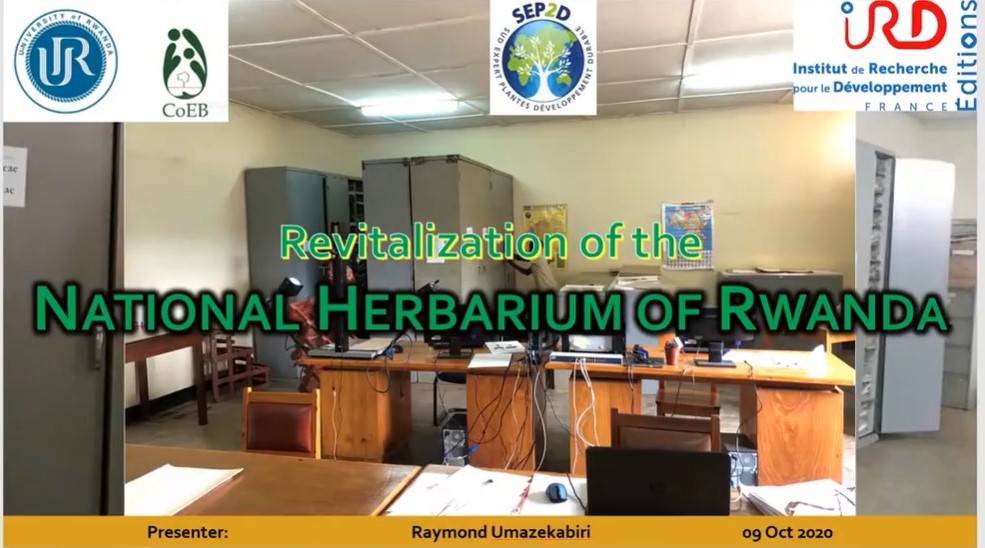
Biography
Raymond Umazekabiri is a graduate from Botany and Conservation at University of Rwanda, College of Science and Technology. He is passionate in the field of plant taxonomy and systematic, ecology and ecosystem services, as well as collection management. He is a National Geographic Explorer since August, 2019 through his Early Career Grant awarded from National Geographic Society (NGS) where he is exploring the diversity, abundance and host relationships of mistletoe species along elevation gradient in Nyungwe National Park, Rwanda. Raymond coordinated the National Herbarium of Rwanda Upgrading and Digitizing project at CoEB funded by SEP2D/IRD in France since it started and later, he has been appointed as Herbarium Assistant and continues to work with the specimens, data entry, and trainings on data portal management. He assisted a project entitled “ozone monitoring and its impact on crop yields in rural area of Rwanda” by collaboration with CoEB and a researcher from Centre of Ecology and Hydrology (CEH) in UK where he was responsible for setting up ozone diffusion tubes and gathering data, and sending it to UK partners for laboratory analysis. He was also responsible for planting local beans and detecting ozone injuries while growing. He became a 2nd prize winner in Conversion on Conservation (CoC) poster competition in 2018 and awarded a membership in Society for Conservation Biology (SCB). He also assisted Scientists from Emory University, USA to measure soil trace gases in maize plantations and participatory surveys with farmers to see how they do agriculture and the challenges they face related to climate change. Raymond is involved in different research project proposal writing in CoEB and mentors interns and undergraduate students who come to work in the herbarium. He will be starting a Master’s degree program in Germany in Biodiversity Collections and Management in October-November 2020.
